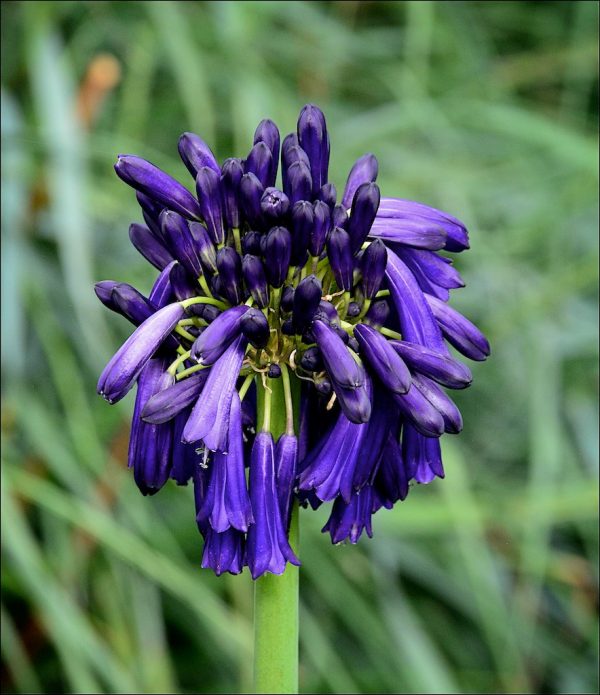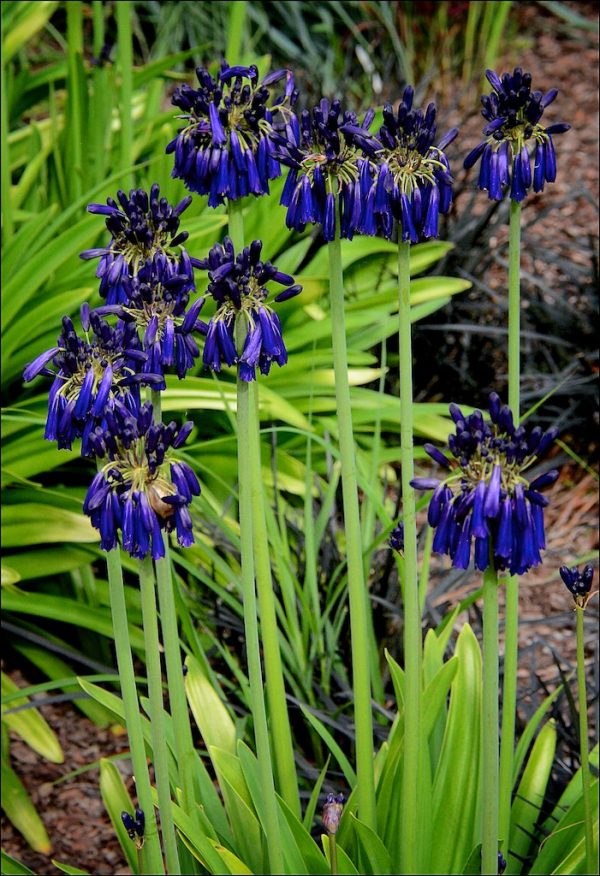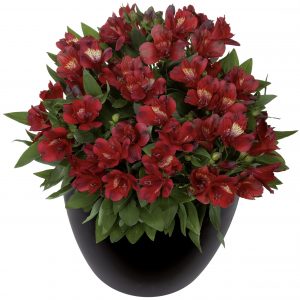PLEASE NOTE: YOUR PLANT MAY BE SUPPLIED CUT BACK
Agapanthus ‘Graskop’
£7.45
A striking cultivar with a compact head of drooping, dark violet blue flowers which emerge from almost black buds. Flowers from midsummer to autumn. Height 1m. Spread 45cm. Full sun, well drained soil. Benefits from an autumn mulch to protect the crown. Hardy.
Description
Agapanthus ‘Graskop’ is a stunning perennial that brings height and elegance to any garden. This variety features tall stems bearing clusters of deep blue, trumpet-shaped flowers that attract pollinators and add visual interest from midsummer through early autumn. Follow this planting guide to ensure your Agapanthus ‘Graskop’ thrives.
PLANTING and AFTERCARE GUIDE
Best Planting Time
- Spring: Plant Agapanthus ‘Graskop’ in early spring when the soil begins to warm up. This encourages robust root development and prepares the plant for a vigorous growing season.
- Autumn: Alternatively, plant in autumn to allow Agapanthus ‘Graskop’ to establish a strong root system before winter, ensuring a healthy start in spring.
Site Selection
- Sunlight: Choose a location where Agapanthus ‘Graskop’ will receive full sun, with at least 6 hours of direct sunlight daily. This is essential for optimal flower production and overall plant health.
- Soil: Agapanthus prefers well-drained soil. While it can adapt to various soil types, good drainage is crucial to prevent waterlogging and root rot. If your soil is heavy, consider adding grit or organic matter to improve drainage.
Planting Instructions
- Preparing the Hole: Dig a hole that is twice the width and the same depth as the root ball of the plant. This will provide ample space for the roots to spread.
- Soil Preparation: Mix compost or organic matter into the soil to enhance fertility and improve texture. This will support the growth of Agapanthus ‘Graskop’ and encourage vibrant blooms.
- Planting: Position your Agapanthus in the hole, ensuring the top of the root ball is level with the surrounding soil. Backfill with soil, gently firming it around the base to eliminate air pockets.
- Watering: Water thoroughly after planting to help settle the soil around the roots. This will promote good establishment and root growth.
Watering
- Growing Season: Agapanthus ‘Graskop’ is relatively drought-tolerant once established. Water moderately during dry spells to maintain healthy foliage and flower production.
- Dormant Season: Reduce watering as Agapanthus ‘Graskop’ enters dormancy. Ensure the soil remains slightly moist but not waterlogged to protect the roots from rot.
Feeding
- Spring: Apply a balanced fertiliser in early spring to support new growth and vibrant blooms of Agapanthus ‘Graskop’. A slow-release formula is ideal for sustained nutrition throughout the growing season.
- Mid-Summer: A light feeding in mid-summer can boost flower production and keep Agapanthus ‘Graskop’ looking its best.
Pruning
- Deadheading: Regularly remove spent flowers to encourage continuous blooming and maintain the plant’s neat appearance.
- Autumn: After the final bloom, cut back the stems of Agapanthus ‘Graskop’ to prepare the plant for winter dormancy.
Mulching
- Spring: Apply a layer of mulch around the base of Agapanthus ‘Graskop’ to retain soil moisture, suppress weeds, and regulate soil temperature. This will benefit the plant as it begins its growing season.
- Winter: An autumn mulch helps protect the crown and roots from cold temperatures, providing insulation and stabilising the soil.
Supporting the Plant
- Staking: While Agapanthus ‘Graskop’ generally has strong stems, it may benefit from staking in exposed or windy areas to prevent damage or bending.
Agapanthus ‘Graskop’ is a low-maintenance, striking addition to any garden. With its tall, dramatic flower stalks and deep blue blooms, it creates a stunning visual impact. By following this guide, you can ensure your Agapanthus ‘Graskop’ thrives and continues to bring beauty to your garden season after season.
See more Agapanthus from Proctors
Additional information
| Pot Size | |
|---|---|
| Plant Botanical Type | Perennial (herbaceous) |
| Flower Colour | Dark Violet, Blue |
| Leaf Colour | Green |
| Varigated Leaf | No |
| Scent | No |
| Height | 1m |
| Spread | 0.45m |
| Blooms/foliage interest in | Summer, Autumn |
| Evergreen | No |
| Hardiness | mild winter to – 5C |
| Container | Borders and Containers |
| Sun/shade | Full sun |
| Soil Type | Loam (normal) |
| Soil PH | Neutral |
| Drainage | Well drained soil |
| Hazerdous | No |
| Insect Attraction | Bees |










Lynn A. (verified owner) –
Very good plant, larger than I expected
Pamela Rose (verified owner) –
Janet W. (verified owner) –
As above
RAY B. (verified owner) –
Excellent service, plants arrived safely packaged and are now potted up ready for Summer. Can highly recommend this nursery and will use again.
Anonymous (verified owner) –
Healthy plants with life in front of them. Will pot on to overwinter.
Amanda W. (verified owner) –
Terry Lord (verified owner) –
Having spent 50 years, firstly, in commercial horticulture, and then in ornamental, as a Head Gardener, I recognised immediately, that this nursery not only produces first rate point of sale plants, but knows how to pack them, and send them out safely and quickly.
Paul w. (verified owner) –
Very speedy and received a very healthy looking young plant. I will definitely be using again
Elaine G. (verified owner) –
Excellent service. Very good healthy plant.
Martin Jackson (verified owner) –
Tania T. (verified owner) –
All the plants were in great condition – delighted
Joanna S. (verified owner) –
All the plants I ordered arrived in really good condition and very promptly by Royal Mail. I’m really pleased and will not hesitate to order from Proctor’s Nursery again 🙂
Jill (verified owner) –
Good quality plants. Good size. Arrived well packed upright in large boxes. Would definitely buy again.
Barbara Baldwin (verified owner) –
Cannot fault the quality of your plants or the packaging they came in. Look forward to ordering again thank you
Rebecca (verified owner) –
Lovely white flowering agapanthus. Arrived quickly and packed very well. A great healthy plant which is now flowering